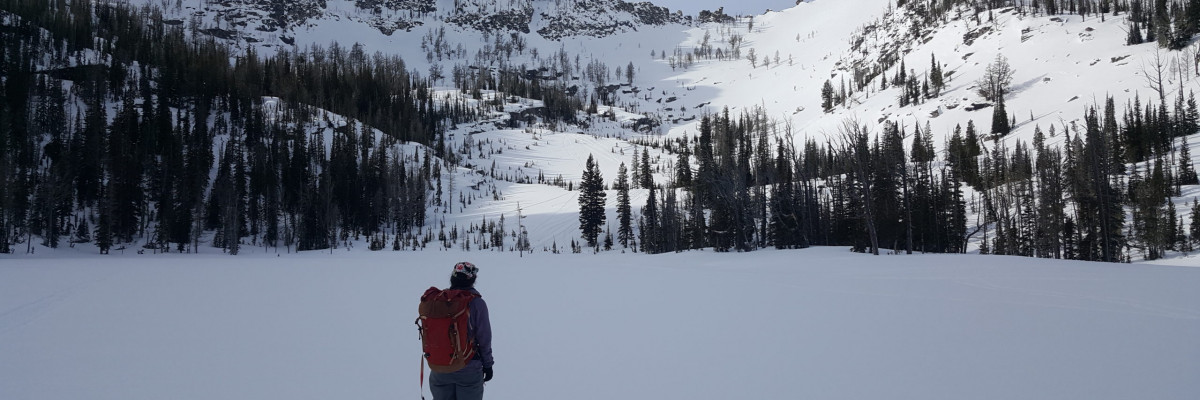The avalanche danger is MODERATE in the Rattlesnake and LOW in the central and southern Bitterroot, and Seeley Lake zone. It is possible to trigger an avalanche in the Rattlesnake. There are isolated avalanche problems in the other zones. Low does not mean no avalanche danger.
Good Morning. This is Jeff Carty with the West Central Montana Avalanche Center advisory on Tuesday, January 26th, 2021. This advisory is sponsored by the Rocky Mountaineers. This advisory does not apply to operating ski areas and expires at midnight tonight. The USDA Forest Service is solely responsible for its content.
Weather and Snowpack
Mountain temperatures range from 13 degrees to 22 degrees F this morning. No new snow overnight. Winds are light and southerly.
Low hazard is defined as: Generally safe avalanche danger, watch for unstable snow on isolated terrain features.
This is what we have throughout the majority of our forecast area. Overall it is unlikely to trigger an avalanche. However, due to spatial variability diligent hazard assessment is required despite the low rating. Suspect areas are shallow snowpacks, generally under 4 feet in depth, where persistent weak layers exist. These can be found at mid elevations and on wind scoured slopes. Upper elevation leeward slopes may contain wind slab. Cornices have been growing and are a hazard. Terrain traps will increase the consequences of these problems.
The exception to the low rating is the Rattlesnake, where there is moderate hazard. This range has received less snow than the rest of the forecast area and as a result the structure has been slowly deteriorating due to the growth of facets and depth hoar. These layers are stubborn and deep. While it is not likely to trigger these layers, it is possible. Given the depth and stiffness of the slab, the resulting avalanche could be very destructive.
Layers such as this can be tricky to assess. As persistent weak layers get buried deeper, they become unpredictable. They will likely not give warning signs such as cracking or whumphing, can avalanche despite being skied repeatedly, and as they get deeper can produce false stable results on extended column tests. The propagation saw test is a good test for deep faceted layers if you are not seeing propagation in the ECT. The best approach is to avoid slopes over 30º.
Bottom Line
Generally stable conditions exist, except in the Rattlesnake where it is possible to trigger an avalanche. Due to spatial variability, isolated instabilities are present throughout the forecast area. Avoid slopes with weak sugary snow. Do multiple pits investigating the stripes in your pit wall. Avoid cornices and wind loaded terrain. Choose simple terrain that does not expose you to terrain traps. Avoid likely trigger points on slopes.
Travel one at a time in avalanche terrain, carry a beacon, shovel, and probe. Remember to reassess conditions throughout the day and stay alert for signs of instability. Dig a pit. Look for red flags.
Upcoming Education Events:
Please visit our education page for an up to date list of regional educational events and course offerings. Below are a few select events and opportunities to check out.
- January 27th, 6-7:30 PM MST | FREE Online 1.5-hr Avalanche Awareness Session | Missoulaavalanche.org event | Delivered by A3 Pro instructors | Get more details and register HERE
- January 28th-31st | Motorized AIARE 1 Course | Delivered by the Mountain Riding Lab | Get more details and register HERE
- February 6th | Motorized Avalanche Rescue Course | Delivered by the Mountain Riding Lab | Get more details and register HERE
- February 7th | Motorized Avalanche Rescue Course | Delivered by the Mountain Riding Lab | Get more details and register HERE
Public Observations
Thank you to everyone who has taken the time to send in a public observation. Please keep sharing what you find and see while out in the backcountry. This online forum is a great resource to glean information about current conditions.
Remember, you can submit your observations through the observation page anonymously. When submitted anonymously, the forecasters review the observation and utilize it when generating the forecast. The information does not appear on the public observation page.
Ski and ride safe.














